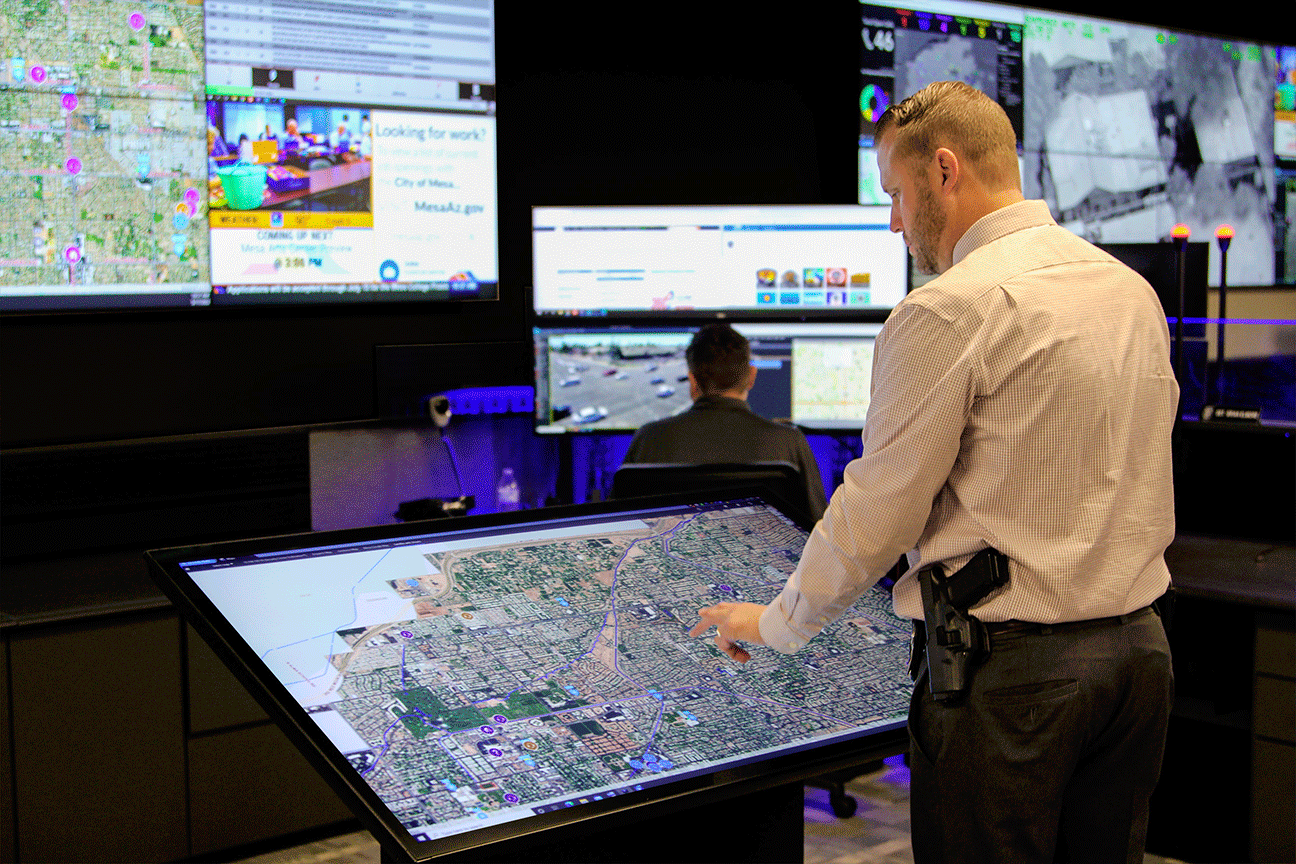
Empowering Real-Time Crime Centers (RTCCs) with AV Technology for Proactive Policing
In the realm of law enforcement, the integration of technology has revolutionized crime prevention and investigation. Real-time Crime Centers (RTCCs) stand as pioneers in this evolution, employing proactive analysis and response strategies to enhance officer and citizen safety. As law enforcement agencies increasingly adopt technology-driven policing approaches, the significance of RTCCs in managing and leveraging a variety of technological tools becomes paramount.
Understanding Technology-Driven Policing
Technology-driven policing (TDP) represents a transformative shift in law enforcement methodology, utilizing technology to proactively prevent or reactively investigate crime. While individual tools such as ALPR cameras, gunshot-detection devices, police drones, and remotely viewed cameras are not new, the integration and synergy of these tools have become the hallmark of TDP. At the core of this transition lies the need for a centralized unit to effectively manage and leverage these technologies—a role perfectly suited for RTCCs.
Key Components of an Effective RTCC
Several fundamental principles underpin the effectiveness of RTCCs in the realm of technology-driven policing:
1. Proactive Real-Time Analysis for Enhanced Safety
RTCCs prioritize conducting real-time analysis to improve officer and citizen safety. Proactive RTCCs surpass reactive responses by providing critical information to officers before they arrive at the scene. Through research on individuals involved in calls for service and offering real-time situational awareness via live-viewing cameras or drones, RTCCs empower law enforcement personnel to make informed decisions that mitigate risks and enhance safety.
2. Real-Time Identification of Suspects
RTCCs play a pivotal role in assisting the identification of criminal suspects in active investigations. Unlike traditional reactive approaches, RTCCs proactively gather information related to ongoing incidents, such as robberies or assaults. By leveraging technology to track suspects in real-time and provide actionable intelligence to responding officers, RTCCs expedite the apprehension of suspects and aid in the swift resolution of cases.
3. Active Participation in Apprehension Efforts
One of the most impactful functions of RTCCs is their active involvement in apprehending individuals involved in criminal activities. By strategically monitoring high-crime locations and deploying remotely viewed cameras, RTCCs can detect and respond to criminal offenses in real-time. This proactive approach not only leads to the swift apprehension of offenders but also serves as a deterrent, fostering a safer community environment.
Empowering RTCCs with AV Technology
At the heart of RTCC operations lies the integration of AV technology, enabling seamless communication, data visualization, and situational awareness. From high-definition display walls to immersive audio systems, AV solutions provide RTCC personnel with a comprehensive view of unfolding events, facilitating swift decision-making and coordinated response efforts.
Conclusion: Advancing Safety and Security through Collaboration
In the pursuit of safer communities, the integration of AV technology plays a pivotal role in enhancing the capabilities of RTCCs. Leveraging the expertise of AV integrators like Level 3 Audiovisual, law enforcement agencies can harness the full potential of RTCCs to proactively address crime, protect citizens, and uphold the principles of justice. Together, we stand at the forefront of innovation, driving positive change and making our communities safer for generations to come. Contact us today to learn more about our experience in empowering RTCCs and how we can assist in creating a tailored solution for your agency's needs!

